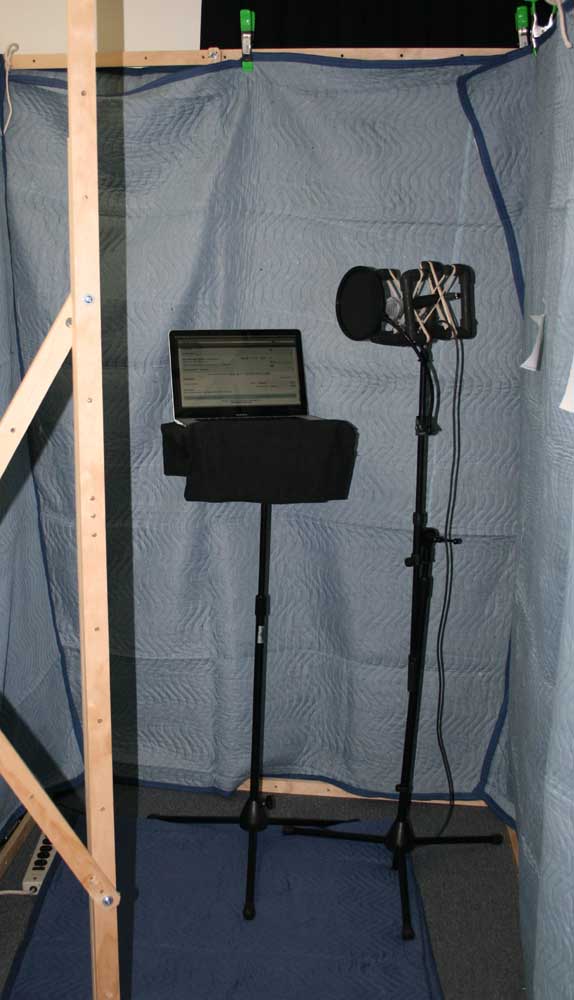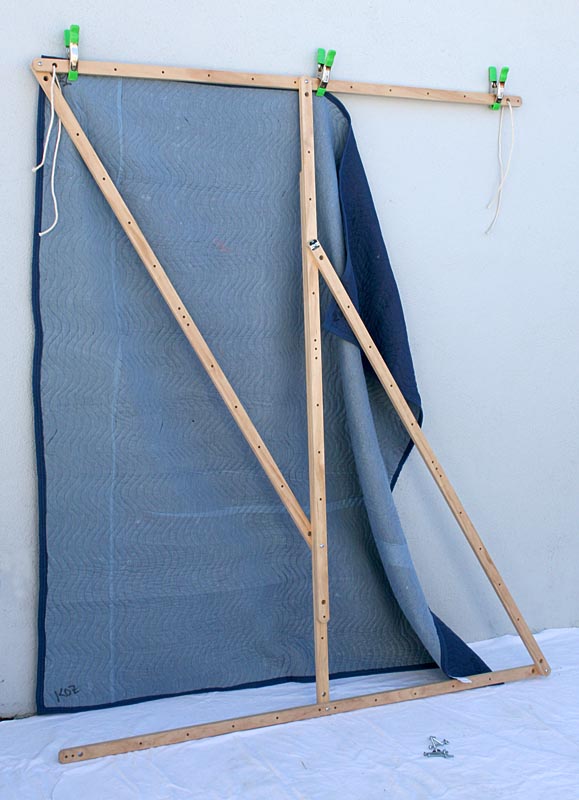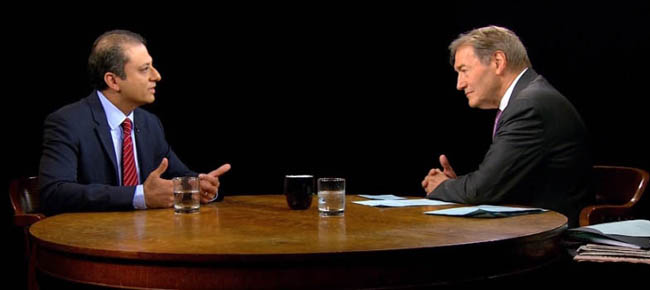I am new to podcasting and audio editing, and we have started a podcast recently. Up until this point we have recorded our audio all separately using our phones and lapel condensor 3.5mm microphones, but I am now looking to record all 4 straight into audacity. I think (but I am not certain) this is done with a bus mixer? I want to keep all 4 channels separate on audacity and be able to adjust to volumes coming through on the mixer (if necessary, the mics are very sensitive and we are very loud people). Has anyone got any advice?
In my opinion you’re going in the wrong direction. For every one or two people that have trouble with individual performer recording, there are massive forum pages of people having computer recording troubles.
What is the goal? It’s probably to produce a podcast quickly and easily with no extended editing job. If you produce the podcast in studio configuration, somebody will need to play recording engineer, live, in real time. It’s a skill-set.
Do you have a computer that makes no noise? I don’t mean minimal noise. I mean no noise. In studio configuration, the computer noise will be picked up by all the microphones assuming everybody is in the same room.
Koz
It’s too late, right? You already have the microphones picked out?
Again, in my opinion, you would be way better off putting first level soundproofing in so it doesn’t sound like you’re recording in a kitchen or bathroom (even if you are actually recording in a kitchen or bathroom).
And I don’t mean popping for expensive sound panels. I’m a big fan of furniture moving quilts.
This is my design for a simple, one-person “kitchen table studio.”
https://forum.audacityteam.org/t/too-compressed-rejection/52825/22
I know you’re multiple people, but that’s just the idea.
I’ve been known to create a much larger “studio” with multiple pads. This is a movie animation sound shoot.

Note there’s one on the floor.
Being obsessive, I created a knock-down wooden frame to turn this…

Into this.

Also note in this broadcast shoot, there’s one folded up on the table. That can solve a number of reflection, comb and “slap” sound problems.

There’s a fuzzy rule about soundproofing opposing surfaces first. So if you can’t do anything about the ceiling, throw some quilts on the floor. Prop up some quilts on one of the two East-West walls and one of the two North-South walls. Best if you hang some quilts on all the walls.
And don’t poo-poo simple sound equipment. I turned in a voice clip that passes audiobook technical specifications with a tiny sound recorder (Zoom H1n) and roll of paper towels–in a super quiet room with no echoes.

Koz
Modern, polished wooden floor, minimalist rooms are a sound horror.

Looks stunning, doesn’t it? It would be nearly impossible to make a good sound recording in that room.
Koz
Sorry, was meant to check back here sooner but I’ve been occupied! Thank you for you help. One of the people who is also on the podcast picked out the mics. We originally recorded off one, however due to our propensity to make too much noise or say things that probably should be edited out, we opted to go for individual microphones. I wish we’d never bothered, as it’s been more hassle than it’s worth. We currently record with apps on our individual phones, which works in theory, but I find us all far too loud. You can hear each other as clear as day even at about -20. The apps we use have also introduced their own problems (skipping, cutting out, etc) some of which is user error and some I just don’t know. The most frustrating is the playback tones never quite marry up perfectly, which I don’t understand at all. I can fix it but boy is it a pain. We do the podcast more for fun, and we don’t have tons of money to throw at it, so it’s (sadly) unlikely we’ll manage perfect sound conditions. I’m happy with a slight amount of background noise, in particular if it can be lessened using the noise removal tool. What I really need is something to record all 4 channels and put them separately onto audacity. I think this may be a audio interface having done some research. Ideally it can adjust sound levels too to make my life easier in post processing, in particular if I can have each mic only picking up one person at a time. Although it feels inevitable we will have to get nicer microphones if we continue
if I can have each mic only picking up one person at a time.
You’re all in the same room?
I saved this layout for illustration. This is (or was) the Charlie Rose studio and that’s the spacing he needed to get good isolation between his voice and the guest. He and the guest are well-behaved and not trying to shout over each other (usually).

They’re wearing good quality lavalier (chest) microphones. You can see the guest’s just to the right of his tie knot. There’s four of you? How big is your room?
You will still get cross-talk between the different people, but it may be manageable by careful editing.
We currently record with apps on our individual phones
Which apps and which microphones?
The most frustrating is the playback tones never quite marry up perfectly
There are tricks to editing multiple wild recordings.
Everybody quiets down and somebody claps once very loudly at the beginning and then again at the end of the show. If your recordings are as leaky as you say, it will be audible on all the microphones. If you want to do a little Hollywood, Yell CAMERA MARK [clap] at the beginning and END MARK [clap] at the end. Yes, that’s a real thing. That’s what the clap board does for picture and sound sync.
Those are the time marks and you can use them to correct for each recorder’s speed variation. Audacity > Effect > Change Speed. Pick one (say yours) and then move the others to match. As long as they all keep the same phone, the corrections will be constant and you will only have to figure it out once.
Albert’s mic is 0.3% fast (no matter how long the show is) > apply correction > Boop, done.
even at about -20
I’m not sure I understand that one, but that can be a New User error. There is no “the knob is at 4:00 o’clock.” The knob goes wherever it needs to be to make the show work. That’s why almost all recording apps I’ve ever seen have some kind of volume indicator even if it’s only a light that flashes Dark, Green, Yellow, Red. Keep it green.
The apps we use have also introduced their own problems (skipping, cutting out, etc) some of which is user error and some I just don’t know.
My first choice will be to go into the instructions and turn off all the automatic corrections. No, I don’t want Noise Gate. No I don’t want Noise Suppression,etc. Cellphone sound is Very Highly Processed and people got used to that. Unfortunately, that sound doesn’t make very good shows.
A microphone cutting in and out may happen no matter how you’re recording the show. If the dog chewed on the cable, that’s the way it is. They do that.
What’s the app?
Koz
Hi Koz - so I use Hokusai 2 (iPhone) which actually causes me the biggest headaches. It tends to start skipping at louder noises. The others use RecForge, which in fairness has generally been more stable. I did manage to somehow work out the loud noise at the start and end with a change of speed, it’s usually pretty good (but never perfect), except with the skips which then causes me massive headaches (random 0.3 seconds change in the middle of the recording). I’m not sure what the microphones are, they were acquired but my friend, but are simply lapel mics. I’ve been impressed with how clear they are, but to narrow the sound down to one person off each may be not possible. The big issue we have is talking over each other (which we are trying to stop doing ![]() ). I think I’m going to try a audio interface, but with the anticipation of changing microphones…I think in the short term this will save me time in the edit by matching everything up easier, with no skips. I hope…
). I think I’m going to try a audio interface, but with the anticipation of changing microphones…I think in the short term this will save me time in the edit by matching everything up easier, with no skips. I hope…
Oh and to explain what I meant by -20, the gain is set at that level, and it looks like it registers just, say, me when I talk, but when you listen back it can hear everyone. And if it’s any louder it has all sorts of problems when voices are even slightly raised with lots and lots of clipping that I definitely can’t fix
It tends to start skipping at louder noises.
We in America call that broken. Or that’s somebody’s experimental software. Can you imagine explaining to the executive producer that you were on the scene of a massive explosion but you don’t have footage because your recorder doesn’t like loud noises?
Were you introduced those those software packages because you tried Voice Memo (built-in) or Music Memo (Add-On) and they didn’t work? I’ve made passable breakfast table recordings by starting Voice Memo and sitting the phone face-down in the middle of the table. You would think that would be a disaster and that’s what I thought. It wasn’t. It wasn’t Boston Symphony, but it wasn’t that bad.
Just to dip into Real Life for a minute. Did you turn off all the rest of the phone functions while you were recording? No Notifications, no Incoming Ring, no Feed Posts, no Email Tone. Turn off WiFi and turn off the actual telephone connection (if they let you do that).
I can imagine losing your performers if you made them do that, but I’m guessing that would make post production editing a lot easier.
The big issue we have is talking over each other
The worst offender gets to edit the show. Wear your producer hat. You can’t solve all problems by writing checks to Sweetwater Sound.
Koz
Oh and you’re never going to split the performers from each other.
One thing you can do is soundproof the room. I can’t find the example right his second, but I have talked to someone ten feet away in a glassy, insanely echoey room. I can watch their mouth move, but I can’t understand a word they’re saying. Transfer your show to a dead room and listen to the sharpness and intelligibility pick up. You might not even mind the talk-overs so much when you can understand them.
Two items here. I heard an experimental production that had two different people holding different conversations at the same time. It was insanely well done, and if I concentrated just right I could understand both of them. I drove off the road.
Ever listen to two women talking to each other—at the same time—and understanding everything? It comes with the gene arrangement.
Koz
Missed one. I had to record an evaluation session in a movie theater. I shot it in stereo and even though multiple people were talking at once, you could listen on stereo headphones and pick out different people’s clear conversations. The Director was in the middle and the Director of Photography was on the left. One of the Production Assistants was ordering lunch on the right.
Pizza. One of the Producers ordered Hawaiian, but we don’t talk about it.
Koz
Thanks for the advice. I’m not sure how we ended up with the apps we use - I’m pretty sure mine came from a recommendation but obviously I need to review that. So I did go ahead and get a audio interface (to trial it more than anything…) I’m now having a new issue in audacity. It has 4 inputs and I can set audacity up to see 4 inputs, however it is insisting the first 2 are both recording as a stereo track. Alternatively it’s just showing 3 tracks. Any ideas?
PS I know exactly what you mean about 2 conversations, I’ve seen my wife do this and be in awe
Ah. I may have worked this out. I can’t fix it whilst recording (I’m sure there is a way but I don’t know it) but what I can do is separate the stereo tracks once they are recorded. I’m not recording now for about a month - I’ll let you know how it goes…
Many multi-track recorders mount in conventional computer systems as bunches of stereo tracks. I’m more than half-way convinced that this is a marketing and publicity thing. When you take the mixer out of the box, it does “something.”
Anything to prevent you from sending it back. You always think you’re doing something wrong.
There’s usually driver software or other configuration changes to reveal multiple tracks. Audacity will not record from more than one “thing,” but it will totally record one thing multi-track under the right conditions.
https://forum.audacityteam.org/t/multi-channel-recording-in-audacity/15644/1
Koz
There could be an Audacity oddity in here. Some devices depend on Special ASIO drivers to make everything work. Because of licensing restrictions Audacity does not easily support ASIO.
“Easily.” It is possible to recompile the Audacity program to accept ASIO software. Have you ever compiled a computer program? In English, that’s starting from programming language that a developer would write and convert it to the advanced language that the computer actually runs. Much of the writing and many of the modules are already written and you have to put them all together to make a new Audacity.
https://manual.audacityteam.org/man/asio_audio_interface.html
Koz
Those iPhones and lavaliers are looking better and better aren’t they?
You might try Voice Memo just to get a feel for how it works.
Page two of opening screen > Extras > Voice Memo.
I opted for the larger memory device because I knew I wanted to mess with the sound and picture tools. I think the only way to transfer the work is through iTunes. I also remember it comes down in an odd format and you have to do some conversions.
There is also Music Memo and that you have to get from the Store.That one has hope because it has no live processing at all. I fell out of love with it when it turned out I needed an insane amount of magic to make the files usable.
Anybody else think iTunes was designed by the kid they got when the regular staff went on vacation/holiday?
Koz